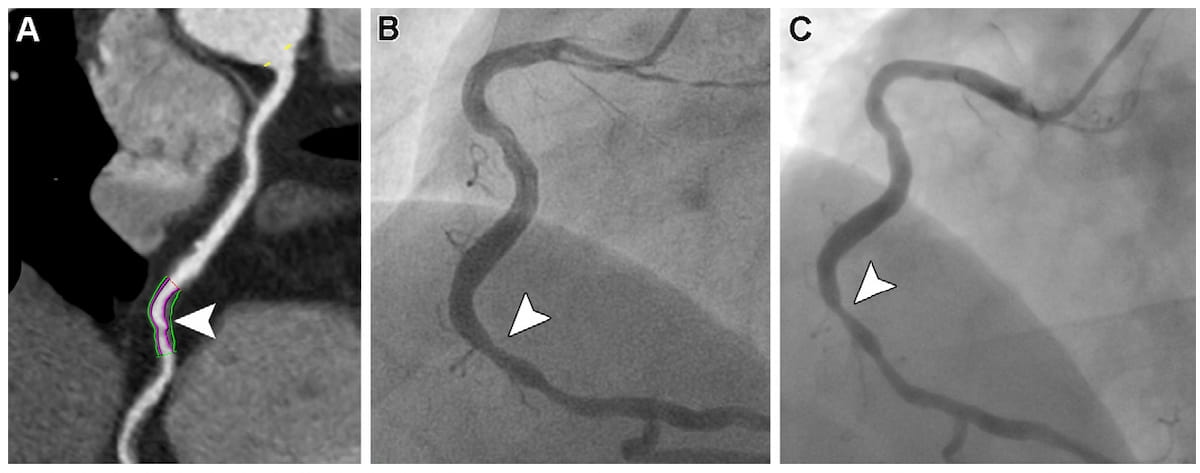Cardiovascular
Coronary CT Angiography Study Shows Link Between Major Cardiovascular Events and High Lipid Core Burden
Emerging research, based on coronary computed tomography angiography (CCTA) findings, suggests that a lipid core burden greater than or equal to 2.8 percent in patients with non-ST-segment elevation (NSTE) acute coronary syndrome (ACS) is associated with significantly elevated risk for major adverse cardiovascular events (MACEs).
For the multicenter prospective study, recently published in Radiology, researchers reviewed data from 342 patients with NSTE ACS (mean age of 57.9) who had CCTA exams within a day of undergoing invasive coronary angiography (ICA).
Data from a median follow-up period of four years revealed that 29.7 percent of the study cohort had MACEs, ranging from 41 hospitalizations for unstable angina to eight cardiac deaths. The researchers also noted that MACEs related to non-revascularized plaque occurred in 23.9 percent of the cohort.
For a 39-year-old study participant, the initial imaging (A) revealed a low attenuation plaque without significant stenosis. The study participant had lipid core volume of 33.94 mm3 and lipid core burden of 15.39 percent at that time. The index invasive coronary angiogram (B) also revealed no significant stenosis at the same site. Upon hospitalization for unstable angina 2.8 years later, the patient’s invasive coronary angiogram 2.8 years later (C) revealed significant stenosis at the same site. (Images courtesy of Radiology.)
Advertisement
The study findings showed that those with MACEs related to non-revascularized plaque had significantly higher lipid core volume (37.6 mm3 vs. 7.3 mm3) and lipid core burden (12.8 percent vs. 3.8 percent) in comparison to study participants who did not have non-revascularized plaque-related MACEs. The researchers also noted a 12.6 hazard ratio for MACEs in participants with a lipid core burden greater than or equal to 2.8 percent in comparison to those who had less than a 2.8 percent lipid core burden.
“In our study, plaque-level lipid core burden and volume were both independent predictors of future non-revascularized plaque-related MACEs, suggesting that lipid-rich plaques were at high risk for future adverse events,” wrote study co-author Bin Lu, M.D., a professor and director of the Department of Radiology at Fuwai Hospital, Peking Union Medical College and the Chinese Academy of Medical Sciences in Beijing, China, and colleagues.
Noting challenges and risks with three-vessel intravascular imaging, the researchers suggested the use of software (Frontier, Siemens Healthineers) that can quantify plaque on CCTA could facilitate more efficient and accurate risk assessment.
“With the development of semiautomatic software for quantification of plaque information at CCTA, it is possible to quantify lipid core burden and volume rapidly,” emphasized Lu and colleagues. “In the current study, the interclass correlation coefficients ranged from 0.74 to 0.86 for interobserver and intra-observer agreement of lipid core burden and volume at the participant and plaque levels, reflecting the robustness of the software.”
In regard to study limitations, the researchers acknowledged that the diagnosis of NSTE ACS in all study participants may limit extrapolation of the study findings to patients with chronic coronary syndrome, ST-elevation myocardial infraction or very high-risk NSTE ACS.

